- Home
- Joel Goldman
All Gone
All Gone Read online
Praise for Joel Goldman
“Packed with action and suspense!”
Reed Farrel Coleman on All Gone
“All In is one wild ride.”
Zoe Sharp
“Electrifying!”
Publisher’s Weekly on Motion to Kill
“Fast, furious and thoroughly enjoyable!”
Jeffery Deaver on The Last Witness
“Joel Goldman is the real deal!”
John Lescroart on Cold Truth
“Highly recommended.”
Lee Child on Deadlocked
“A page turner of the highest caliber…I loved it!”
Michael Connelly on Final Judgment
“Chillingly realistic…fast-paced, smartly plotted and gripping.”
Linda Fairstein on Shakedown
ALL GONE
AN IRELAND & CARTER THRILLER
A NOVEL BY
JOEL GOLDMAN
&
LISA KLINK
This is a work of fiction. Names, characters, organizations, places, events, and incidents are either products of the authors’ imaginations or are used fictitiously.
All rights reserved.
No part of this book may be reproduced, or stored in a retrieval system, or transmitted in any form or by any means, electronic, mechanical, photocopying, recording, or otherwise without express written permission of the publisher.
Copyright © 2018 Character Flaw Press, LLC
Published by Character Flaw Press, LLC
Published in the United States of America
Books by Joel Goldman
Motion to Kill
The Last Witness
Cold Truth
Deadlocked
Final Judgment
Shakedown
The Dead Man
No Way Out
Stone Cold
Chasing The Dead
Freaks Must Die
Books by Lisa Klink
Slaves to Evil
Evil to Burn
Reborn
Books by Joel Goldman & Lisa Klink
All In
All Gone
For Greyson & Asher —
The Next Generation
ONE
IN A NORTHERN SUBURB of London, Sarah St. James lay in her dark bedroom, tossing side-to-side. Wide awake, she let out a sigh and sat up. The clock on the nightstand next to her bed read Monday 3:48 a.m.
Her husband Michael stirred. “What is it now, luv?”
“You’ll think I’m crazy.”
Michael propped himself on his elbow. “Already do, that’s why I married you.”
After twelve years of curating medieval manuscripts for the British Library, Sarah had been assigned to curate the Unification exhibit displaying the four remaining original copies of the Magna Cartas together for the first time in eight hundred years. At thirty-four years old, it was her first major exhibit and would be a career make or break moment. She’d devoted the past year and a half to perfecting every detail, promising Michael, that when it was over, they would start the family that he’d pressed for every time she told him she wouldn’t be home for dinner.
“It’s the little details that are driving me mad,” she said. “I can’t remember if I told the maintenance crew to fix the wobbly sign under the portrait of King John.”
Michael peered at the clock. The exhibit opened in six hours. “I can live with a crazy wife but not one that’s stark raving mad so go have a look.”
Sarah leaned over and kissed him. She took a quick shower and put on the dark green, scholarly-yet-stylish dress she’d purchased for the grand opening. She applied make-up to soften her cheekbone’s sharp angles and tried fixing her thick, sandy brown hair in various styles before pulling it back into its usual, functional knot, reminding herself this was a museum exhibit opening, not a red-carpet affair.
As she drove to the Library, the list of details to check and double-check grew, making her more anxious. Once she reached the parking lot, she began to feel better because she was doing something instead of just worrying. She dashed through the rain to the staff entrance and pressed the intercom button, then dug her ID badge out of her purse and held it up to the camera. At that hour, it was the only way into the Library.
“Hi, Dr. St. James. Back again, eh.” said Colin Saunders, one of the guards manning the security control room. It was her third pre-dawn appearance this week.
“Hi, Colin. I’m going to the Magna Carta exhibit, so could you…”
“Turn off the motion detectors?” He hit a control at his workstation. “Already done. I’ll let the other guards know that you’re here so they don’t get excited if they see you roaming the halls.”
“You’re an angel,” she said.
Colin buzzed her into the building. The exhibit was in the PACCAR gallery, named in appreciation for a generous contribution by PACCAR, Inc. A steel gate that descended from the ceiling closed the gallery off from the rest of the Library.
The gallery began with a long, wide entry hall. Magna Carta 1215-2015 was written in large Gothic script on one wall. Surveillance cameras and infra-red motion detectors were mounted throughout.
Down a short flight of stairs, the gallery spread out into an open, two-story space with freshly painted white walls and new gray carpet. Temporary interior walls created a path through a series of exhibits describing the history and politics of 13th century England, setting the stage for the world-changing documents visitors would line up around the block to see.
The Magna Cartas were kept in custom-built display cases lined up side by side in an alcove against a dramatic red wall. Each stood forty inches tall, with wide pedestal bases covered in oak veneer. Beneath the veneer were removable panels that provided access to the Magna Cartas. Like the rest of the security for the exhibit, the cases had been designed by Titan Security Solutions.
The Magna Cartas were encased under impregnable glass hoods, each framed copy sealed in protective acrylic. The frames rested on motion sensors that would sound an alarm if they were moved. All four documents rested on plush red velvet, angled upward to offer visitors the best view, illuminated by floodlights in the ceiling.
Sarah swiped her badge through the card reader next to the steel gate, tapping her foot as it slowly rose. She was pleased to see that the sign beneath the portrait of King John had been put straight. Everything was ready. The grand opening just might be a success and she just might keep her job and make her husband a father.
She was about to chide herself for needlessly worrying when she saw a sheet of oak veneer lying on the gray carpet just inside the archway leading to the room where the Magna Cartas were displayed. Puzzled, she continued into the room and saw that the veneer had been stripped from each display case, the access panels were lying on the floor and the glass hoods were open. Suddenly unsteady, she ventured a few steps closer until she saw that the cases were empty.
“Noooo.”
Staggered, she grabbed hold of an open case, then looked around the room, blinking, not wanting to believe what she was seeing. Her gaze stopped on a folded piece of paper lying inside one of the cases. She picked it up, wishing it contained a reprieve, the message printed in bold font crushing her faint hope.
One hundred million pounds for the safe return of the Magna Cartas. No police or they go in the shredder. You’ve got five days. Wait for instructions.
To make the point, a thin strip of torn parchment was taped to the page. She couldn’t tell if it had been ripped from one of the Magna Cartas but it was enough to send a chill through her.
Her initial shock gave way to her curator’s training. Mounting an exhibit was all about the details. Every object, every display case, every sign, light and rope line h
ad to be exactly right. And the exhibit had to be secure.
Only three people had ID cards that would open the steel gate that protected the gallery - Malcolm Bridges, who’d designed the security for the display, Ian Thorpe, the Library’s Director of Security, and her. Motion detectors should have sounded an alarm the instant the thieves crossed the threshold and video cameras should have recorded their every movement.
Even if they’d gotten past all that, they should never have been able to break into display cases Bridges had assured were fail safe. And, if they’d somehow done that, the motion sensors inside the cases should have triggered alarms the instant they touched the Magna Cartas.
She looked at a camera mounted in the corner of the ceiling, waving her arms and jumping up and down. Yet Colin didn’t call on the public address to ask her what was wrong. He must have seen the wreckage, if not the actual robbery. But how could he have and not summoned Ian Thorpe and the police.
She stuffed the ransom note in her dress pocket and turned her attention to the empty frames in each case, wondering about the duct tape stretched across the frames. Kneeling for a closer look, she saw thin cuts around the edge of the acrylic sheets. She dug her thumbnail under the corner and lifted the loose panel. So that was how they had removed the Magna Cartas. And, they’d used the duct tape to hold the frames in place to avoid setting off the pressure sensors. Clever.
Sarah knew nothing about criminal investigations but she’d read enough about museum robberies to know they were often inside jobs. She couldn’t imagine Colin being part of it. He was too dim for that. And if he were, she doubted he would have hung around to finish his shift.
Before she called Ian Thorpe, she wanted to see the video footage of the gallery. It would soften the blow if she could tell him that they had the thieves on tape. She took the stairs to Basement Level One and knocked on the door to the security control room.
Another guard, Paulie Reed, opened the door and she brushed past him. “Colin, let’s have a look at the Magna Carta exhibit.”
“Sure thing, Dr. St. James.”
Sarah was stunned for a second time when the images from the gallery showed the display cases intact and the Magna Cartas resting safely inside.
“That can’t be right,” she managed.
“That’s the live feed from the gallery,” Colin assured her.
“Run the tape back to yesterday’s closing and then fast forward it.”
He pointed at one of the other monitors. “I’ll pull it up on number 12.”
Sarah stared spellbound as the rewound tape ran forward at high speed. No one entered the gallery. No one broke into the display cases and no one stole the Magna Cartas. She wanted to believe that she’d lost her mind and imagined the whole thing but she knew better. The thieves had opened the gate, disabled the motion detectors and blinded the cameras. More than clever, it was bloody brilliant. But that only happened in the movies, not in her library. How could it?
“Where are the other guards?”
“Patrolling, I expect, ma’am,” Paulie said. He pronounced it ‘mum’, making her feel ancient. “Three inside and two outside.”
“Have any of them reported anything unusual?”
“Like what?” Colin asked.
“Anything!” She heard herself shouting and calmed her voice. “Strange noises? An object out of place?”
Paulie shook his head. “It’s been quiet as an empty church.”
Sarah stepped away from the monitors and leaned against a wall. Incredible as it seemed, she was the only one, besides the thieves, who knew that the Magna Cartas had been stolen. But that was going to change as soon as she called Ian Thorpe. She checked her watch. In five hours, forty-one minutes, the rest of the world would know when the exhibit was canceled. And Thorpe would convince the board it was her fault so they would sack her.
Worse, even if Thorpe and the board didn’t go to the police, it would be impossible to keep the theft quiet even if the exhibit was sealed off. There were no secrets in this building. Once the news broke, Scotland Yard would swarm the library. She closed her eyes, shuddering as she imagined the thieves feeding the Magna Cartas into a shredder. Eight hundred years after King John signed the Magna Carta, the four remaining original copies would be destroyed.
The media would blister the Library for failing to protect the priceless historical treasures in its care. Which would drive away donors, and discourage patrons from loaning their collections to the Library, which would then attract fewer visitors, and the downward spiral would go on. She’d seen it happen to other institutions before. It would be calamity piled upon catastrophe. For now, the situation was contained. Maybe she could keep it that way.
“Dr. St. James?” Colin’s voice startled her. She’d forgotten the young men were even there. She turned to see them staring at her like she’d gone off her nut.
“Sorry to disturb,” she muttered, and left the control room.
The idea taking shape in her mind was utter lunacy, she told herself as she headed to the second floor, keeping watch for security guards. As if she were one of the thieves.
She let herself into the Conservation Centre. She’d spent hours there, supervising the conservators as they painstakingly cleaned and repaired her precious manuscripts. The Digital Preservation team took it a step further. They were in the process of digitizing the Library’s entire collection, using a high-resolution scanner to create image files of every document and every book that would far outlast the originals.
She logged into the computer next to the scanner. She knew that the team had scanned in the London and Canterbury Magna Cartas the Library owned and desperately hoped that they had also scanned the visiting documents from the Salisbury and Lincoln Cathedrals.
“Oh, thank you, Lord,” she said, letting out a breath and leaning back in her chair when she found digital files for all the Magna Cartas.
She stared at the images, running through her impossibly crazy plan. Each step took her closer to the point of no return. If she failed, Thorpe would probably accuse her of being an accomplice despite her good intentions but the alternative was equally terrible. Carry on, she told herself.
She needed parchment to print the Magna Cartas. Unfortunately, the Library didn’t keep a stock of blank, eight hundred-year old parchment on hand. She would have to use the fake stuff. As part of the Unification event, the Library was offering classes and activities for visitors of all ages, including a hands-on workshop where students used medieval bookbinding techniques to make their own authentic-looking replicas.
She slipped down the hall to the Learning Centre and collected sheets of imitation parchment, regular paper which had been aged by crumpling it up in a ball, soaking it in tea and fraying the edges. To her expert eye, it was clearly phony, but it would have to do. Back in the Conservation Centre, she printed a copy of the London Magna Carta on the imitation parchment. Then she took an empty frame from the storage cabinet and slid the document inside.
For the first time since she discovered the theft, she started to smile. The fake looked good enough. In the proper frame, behind a thick glass hood, it could pass for the real thing until they could recover the originals. At least, to an untrained observer. If a Magna Carta scholar or documents expert examined it too closely, they would recognize a tell-tale difference in the fiber content of the paper, or the reflective quality of the ink. She’d have to put up velvet ropes to keep people a safe distance away.
Sarah printed the other three Magna Cartas and hurried to the entrance to PACCAR gallery, watching for security guards and rehearsing what she’d say if she ran into someone. But luck was on her side and she didn’t see a soul.
Back inside the gallery, she stopped for a moment to consider the cameras. Whatever the thieves had done to disable them had better keep working long enough for her to commit her own crime. That’s what she was about to do, she realized. Presenting forgeries as authentic historic documents was fraud. Career ending, pris
on risking fraud.
The hell with that . This was her exhibit. She would make the decisions and face the consequences. She could and would make this work. She slid the Salisbury copy under the acrylic in its frame and removed the duct tape. Then she eased the hood down into its slot around the base.
Sarah stood back a few feet and regarded the display. The phony Magna Carta looked like the real thing, even to someone who knew better. From here, she couldn’t see the cuts in the acrylic. This was going to work.
She still had to replace the access panels and the wood veneers. She retrieved a toolbox from a utility closet and got to work. When she finished, she placed a set of brass posts and velvet ropes several feet from the cases to keep people from looking too closely at the fakes. That was the best she could do. She had either saved the exhibit or destroyed her life. Only time would tell.
More importantly, she had to get the Magna Cartas back safely. To do that, she had to come up with a hundred million pounds in five days. The Library certainly didn’t have that kind of money to spare. But the Magna Carta Trust might. The Trustees were some of the wealthiest people in England and had been appointed to protect the Magna Carta and preserve its principles. They’d provided much of the funding for the preservation of the original documents and for the Unification exhibit.

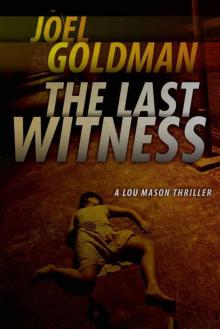 The last witness lm-2
The last witness lm-2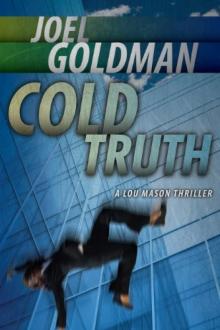 Cold Truth
Cold Truth No Way Out (2010)
No Way Out (2010)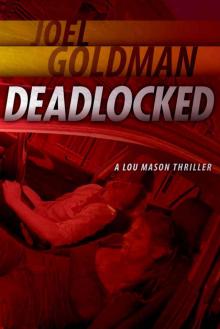 Deadlocked (Lou Mason Thrillers)
Deadlocked (Lou Mason Thrillers)![[Lou Mason 01.0] Motion to Kill Read online](http://i1.bookreadfree.com/i1/03/24/lou_mason_01_0_motion_to_kill_preview.jpg) [Lou Mason 01.0] Motion to Kill
[Lou Mason 01.0] Motion to Kill Final Judgment
Final Judgment Stone Cold
Stone Cold Shakedown
Shakedown Shakedown jd-1
Shakedown jd-1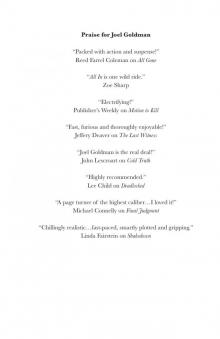 All Gone
All Gone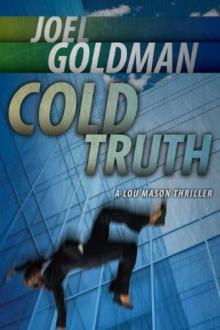 Cold truth lm-3
Cold truth lm-3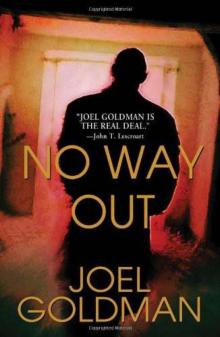 No way out jd-2
No way out jd-2 Jack Davis Mystery - 01 - Shakedown
Jack Davis Mystery - 01 - Shakedown Stone Cold as-1
Stone Cold as-1 Final judgment lm-5
Final judgment lm-5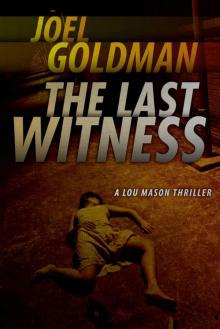 Lou Mason Mystery - 02 - The Last Witness
Lou Mason Mystery - 02 - The Last Witness Lou Mason Mystery 03-Cold Truth
Lou Mason Mystery 03-Cold Truth Motion to Kill
Motion to Kill Die, Lover, Die!
Die, Lover, Die! Chasing The Dead (An Alex Stone Thriller)
Chasing The Dead (An Alex Stone Thriller)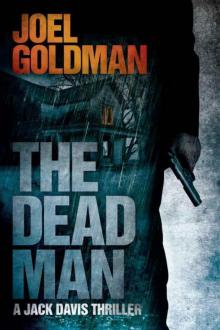 The Dead Man
The Dead Man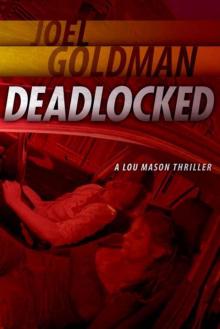 Deadlocked lm-4
Deadlocked lm-4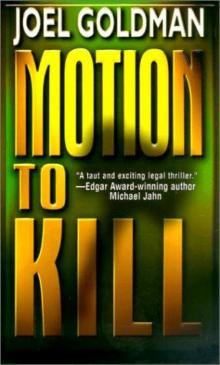 Lou Mason Mystery - 01 - Motion to Kill
Lou Mason Mystery - 01 - Motion to Kill Die, lover, die
Die, lover, die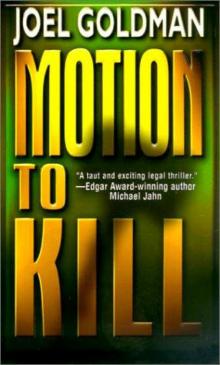 Motion to Kill lm-1
Motion to Kill lm-1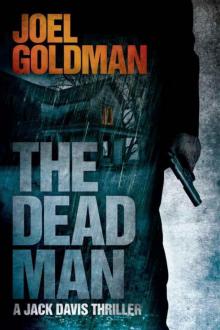 The Dead Man jd-3
The Dead Man jd-3